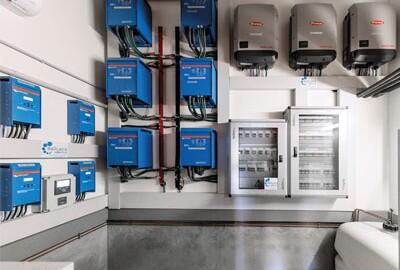Fronius and Victron Energy have joined forces to help Spanish cereal producer CETOSA – Cereals Torremorell S.A by installing three Fronius inverters alongside six inverter chargers and four BlueSolar charge controllers from Victron Energy, which are claimed to offer continuous and uninterrupted power supply.
In remote regions, an unrestricted power supply cannot always be guaranteed, even in EU countries like Spain. This tends to be due either to a lack of physical grid capacity, or because the grid connection costs do not justify the expected level of usage. In this case, many consumers rely solely on energy produced by diesel generators. However, generators are expensive to maintain, and the high emission levels and drawbacks of fossil fuels are issues that can have a huge impact on both the cost effectiveness of a company and on the environment.
This was the challenge facing cereal producer CETOSA. The family-owned business is the leading member of a group of companies founded in 1984, which specialise in the production and marketing of cereals and fertilisers as well as breeding pigs. To optimise the cost effectiveness of the business and ensure a continuous power supply for production operations, CETOSA opted for solar power produced by their own photovoltaic system. The company turned to solar technology from Fronius and Dutch energy specialist Victron Energy to benefit from their expertise in efficient solar systems.
“The aim of this project was to upgrade CETOSA’s 82 kilowatt photovoltaic system,” says Francisco Heredia, Technical Advisor at Fronius Spain. Three Fronius Symo inverters were installed for this purpose and the energy generator was connected directly to the microgrid – a regional, self-contained power distribution network.
“Our inverters have a special setup for this purpose, with various functions to ensure stable microgrid operation”, adds Heredia. Six Victron Quattro inverter chargers and four Victron BlueSolar charge controllers in CETOSA’s system ensure the agricultural business can store surplus energy that can be used as and when it is needed.
This technology is said to offer advantages in terms of fail-safe operation. Most of the time, the output of the inverter is controlled without communication.
“The frequency droop characteristic of the inverter charger and the inverter ensure optimum power set points,” claims David Hanek, Product Manager at Fronius. “But, should the load be less than the maximum capacity of the PV generator, and if the batteries are already full, automatic power reduction will be required.”
In addition to the frequency droop characteristic, voltage-dependent power reduction and reactive power regulation functions can also be activated. A back-up generator provides another layer of safety. CETOSA also benefits from effective system monitoring – the operator can use the Victron Remote Monitoring Portal (VRM) to view live values, while the Fronius Solar.web online portal provides a comprehensive range of display and analysis functions for all PV system data. The Colour Control (CCGX) acts as a data aggregator between the Fronius Datamanager and the Victron inverter/charger.
This technology means the cereal producer is supplied with energy independently of the public grid.
Source: Electronic News











